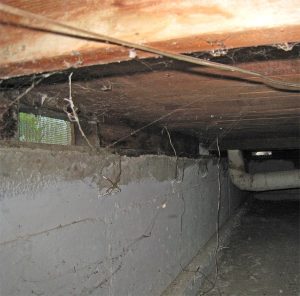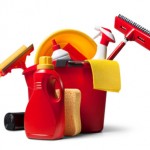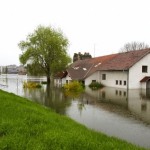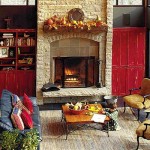It can be exciting to start a new chapter in life when putting your house up for sale. But what many first-time home owners do not realize is that there are many processes, requirements, and hidden costs that come along with putting the house on the market and hiring a real estate agent.
One example is the realtor’s requirement of having a home inspection before putting it on the market. Depending on the home’s condition, it can be a long and costly process and can even be put on hold, due to financial and/or time reasons. But reviewing this list can help you be prepared for the inspection by knowing which areas will be closely examined compared to others.
Here you can find a list of what home inspectors look for:
 Building Structure. Depending on the location, season, and weather conditions, the inspector will look for the areas that are at most risk for damage from these possible sources: hurricanes, thunderstorms, tornadoes, floods, etc. Walls and floors will be inspected for water damage or mold growth. The ceilings, especially around electrical fixtures (fans, lights, etc.), will be closely checked for water leaks. Any strange smells, signs of mold or water damage, or other type of structural damage within the foundation will also be found if they are not treated beforehand.
Building Structure. Depending on the location, season, and weather conditions, the inspector will look for the areas that are at most risk for damage from these possible sources: hurricanes, thunderstorms, tornadoes, floods, etc. Walls and floors will be inspected for water damage or mold growth. The ceilings, especially around electrical fixtures (fans, lights, etc.), will be closely checked for water leaks. Any strange smells, signs of mold or water damage, or other type of structural damage within the foundation will also be found if they are not treated beforehand.- Plumbing. The plumbing is often one of the most common problems found by a home inspector because the pipes are usually hidden. But they will test all drains, vent, water distributors, and waste system (sewer pipes) for signs of any water leakage, fitting of proper filtering apparatus, water pressure, and mineral deposits. If your home also contains a sump pump, water egress and ingress, interior fuel, they will also be examined. Lastly, be prepared for them to check the bacteria level within the water.
- Electrical Wiring. When electrical components, wiring, and appliances are not fitted or not functioning properly, they pose a severe risk for fire damage; they will be inspected for safety. All distribution panels, grounding equipment, and conductors, are also tested for efficiency. Home inspectors will also take note of the location of carbon monoxide and smoke detectors in all rooms.
- Roofing. Any shingles or other roof coverings will stand out immediately for home inspectors but are often overlooked by home owners. They will also check underneath the roofing for any rotten or moist areas that may need water damage restoration. They will also check the flashing around the base of the chimney to see if it is watertight, as well as the bricks and mortar. You will also want to make sure the fire place is clean and works properly.
- Mold and Mildew. As toxic black mold is a threat to all properties, mold and mildew stains can be stressful to deal with. Make sure to have a mold removal professional treat the affected area before contacting the home inspector.
- Basements and Crawlspaces. Especially for older homes, there can often be water leaks, mold, and mildew that you may not even notice until the home inspector finds them. When doing this, they often use a moisture detection meter to measure its level within the spaces as higher concentrations can deteriorate building materials and attract insects. You may also have seepage within the foundation from gutters, hoses, floods, and a malfunctioning sump-pump. Here is what you can do to fix the problem yourself:
- Set up a dehumidifier in the specified area.
- Cover the exposed area with plastic to keep the moisture from seeping in.
- Clear away all debris from gutters to remove any blockages.
- Point downspouts away from the house foundation.
- Check the flow of water in drainage lines by flooding them with a hose. If the water comes back to you, they are clogged and need to be cleaned.
 Appliances and Interior Fixtures. As they may handle or be at risk for water or mold damage, the following will be inspected thoroughly: cabinetry, stairways, washing machine, dryer, refrigerator, freezer, stove, sink, oven, doors, floors, stairways, counters, and especially windowsills. If anything does not function the way it should, they may request that it be fixed before passing the inspection. However, if you are taking a particular appliance with you, be sure to let them know that it is not included in the purchase contract.
Appliances and Interior Fixtures. As they may handle or be at risk for water or mold damage, the following will be inspected thoroughly: cabinetry, stairways, washing machine, dryer, refrigerator, freezer, stove, sink, oven, doors, floors, stairways, counters, and especially windowsills. If anything does not function the way it should, they may request that it be fixed before passing the inspection. However, if you are taking a particular appliance with you, be sure to let them know that it is not included in the purchase contract.- Heating and Cooling. Both the furnace and A/C unit will be inspected and tested for any malfunctions. This also includes the air ducts to check for any blockages or risk for fire damage or mold growth.
- Insulation and Ventilation. Home inspectors will always check the insulation for any hidden moisture or water damage as they can be easily affected from water leaks, rainstorms, or broken pipes. All fans located in the venting will be inspected to ensure they are in working condition. Lastly, if it is accessible through the basement, under-floor insulation will be inspected for damage or deterioration.
Repairs and Restoration Before Home Inspection
Now that you have seen how detailed home inspections can be, it is important to do a walk-through of the property yourself to find and fix any issues before the professional does. This will save a load of time as well as prevent having to deal with a laundry list of negative statements.
On the other hand, some purchasing contracts state that you are under no obligation to make these repairs, although they can make any potential buyers withdraw from the purchasing decision. You may want to consider either negotiating a lower price or identifying the areas that must be fixed in order seal the deal.
When reaching out to the professionals for the repairs, consider using ServiceMaster for mold remediation and water damage restoration. When it comes to structural damage restoration, these professionals are trained and experienced to handle all areas that will have your property properly prepared to exceed expectations during the inspection process.
 Building Structure. Depending on the location, season, and weather conditions, the inspector will look for the areas that are at most risk for damage from these possible sources: hurricanes, thunderstorms, tornadoes, floods, etc. Walls and floors will be inspected for water damage or mold growth. The ceilings, especially around electrical fixtures (fans, lights, etc.), will be closely checked for
Building Structure. Depending on the location, season, and weather conditions, the inspector will look for the areas that are at most risk for damage from these possible sources: hurricanes, thunderstorms, tornadoes, floods, etc. Walls and floors will be inspected for water damage or mold growth. The ceilings, especially around electrical fixtures (fans, lights, etc.), will be closely checked for  Appliances and Interior Fixtures. As they may handle or be at risk for water or mold damage, the following will be inspected thoroughly: cabinetry, stairways, washing machine, dryer, refrigerator, freezer, stove, sink, oven, doors, floors, stairways, counters, and especially windowsills. If anything does not function the way it should, they may request that it be fixed before passing the inspection. However, if you are taking a particular appliance with you, be sure to let them know that it is not included in the purchase contract.
Appliances and Interior Fixtures. As they may handle or be at risk for water or mold damage, the following will be inspected thoroughly: cabinetry, stairways, washing machine, dryer, refrigerator, freezer, stove, sink, oven, doors, floors, stairways, counters, and especially windowsills. If anything does not function the way it should, they may request that it be fixed before passing the inspection. However, if you are taking a particular appliance with you, be sure to let them know that it is not included in the purchase contract.



